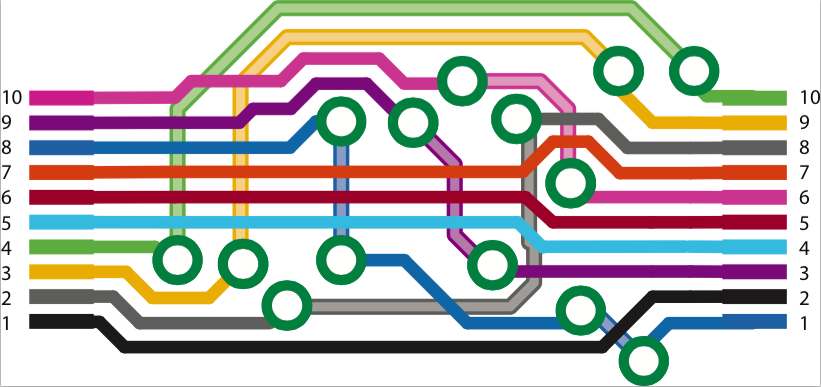What happens if you have to make a lot of crossovers on a circuit board? For example, here is a printed circuit board that connects pins 1 to 10 in a randomly chosen order. In this layout, finished by a person after the autorouter gave up, you have to drill 14 holes, spend time and create dust.

Keeping in mind that our group is working on unconventional electronics, could a woven circuit do better? Woven items are made of crossovers between warp and weft threads. Looking at the problem of how you would bring 10 connectors from right to left on a circuit, crossovers are painless if the wires are insulated, but corners are harder because they involve soldering and cutting. Here is an autorouter in action that draws the same circuit as the PCB, attempts to minimize corners and doesn’t get stuck. (MATLAB code and 100-pin example after the jump).

